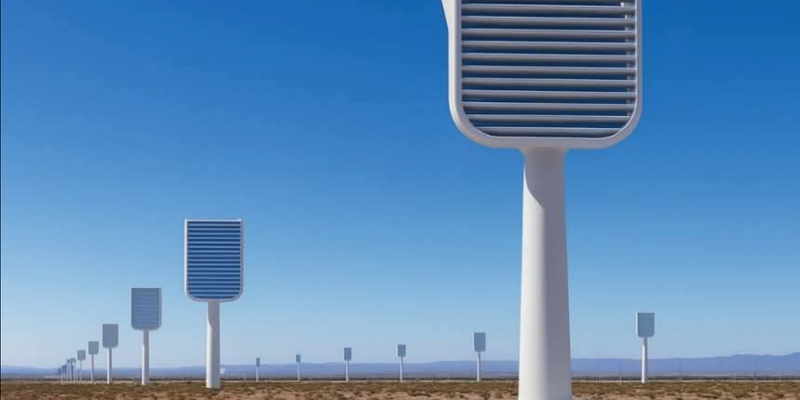
Columbia University is pioneering a breakthrough in carbon capture with its innovative “artificial tree” technology. Spearheaded by Professor Klaus Lackner and his team, this engineered solution removes carbon dioxide (CO₂) from the air up to 1,000 times faster than natural trees—offering a powerful complement to traditional forest-based climate strategies.
What Are “Artificial Trees”?
Despite the name, these devices resemble compact towers or scrubbers—not leafy flora. They use a resin-coated sorbent that absorbs CO₂ from ambient air passively (i.e., without fans), and then releases it when moistened. This “moisture-swing” mechanism allows the material to be repeatedly regenerated using water.
Speed and Efficiency: A Game-Changer
- Rate of capture: A single unit can absorb around one metric ton of CO₂ per day, roughly equivalent to emissions from 20–75 cars.
- Comparative performance: Relative to a mature tree, one artificial counterpart removes carbon at up to 1,000× the speed.
- Anytime operation: These units pull CO₂ night and day, rain or shine—unlike living trees, which depend on sunlight and suitable climates.
The Vision Behind the Innovation
Professor Lackner, a pioneer in direct air capture working since the late 1990s, founded Global Research Technologies (GRT) alongside Allen Wright. Their aim: scalable, flexible deployment. Columbia licensed the technology to GRT, with early models showing promise and prototypes in development.
Over the years, Lackner has estimated production could scale to hundreds of millions of units—each roughly the size and cost of a car—yielding negative carbon emissions on a global scale .
Costs and Challenges
- Initial cost estimates: Early models ran at about $200 per ton of CO₂, though Lackner projected costs could fall to as low as $30–100 per ton .
- Energy demands: While passive CO₂ capture is efficient, capturing and compressing the gas still requires energy—raising questions about sourcing and carbon payback.
- Scaling issues: To offset global CO₂ emissions (~36 Gt/yr), hundreds of millions of units would be needed—a challenge in both cost and manufacturing.
Beyond Carbon Capture: What Happens to the CO₂?
Captured CO₂ can be:
- Sequestered underground in geological formations.
- Used beneficially, for example:
- Supplied to greenhouses to boost plant growth.
- Converted into fuels via CO₂‑to‑hydrocarbon processes.
- Employed in enhanced oil recovery.
This “closed-loop” strategy not only captures carbon—it provides an economic driver to support deployment.
Toward a Cleaner Future
The Columbia initiative marks a major shift toward direct air capture (DAC) as part of the climate solution toolbox. While planting forests remains vital, DAC offers:
- Flexibility: Not limited by land use or climate zones.
- Reliability: Works continuously, independent of weather.
- Scalability: A potential path to draw down atmospheric CO₂.
Nevertheless, DAC must overcome hurdles in cost, energy sourcing, infrastructure, and policy. Critics caution it shouldn’t distract from emissions reduction efforts, but rather supplement them.
Columbia University’s artificial trees represent a transformative leap in engineered climate action. By harnessing advanced chemistry and materials science, these units promise fast, round‑the‑clock CO₂ removal—anywhere, anytime. As cost curves improve and technologies scale, they may well become essential tools in fighting global warming and safeguarding our planet.
Original Article
(Disclaimer – This post is auto-fetched from publicly available RSS feeds. Original source: Yourstory. All rights belong to the respective publisher.)